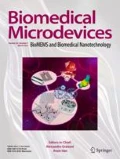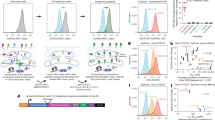Abstract
Major histocompatibility complex (MHC ) epitope presentation is needed for robust adaptive immune responses. Core peptide binding motifs for class I and class II MHC are 8–10 amino acids long, containing two or more “anchor” residues. These binding motifs define epitope anchor amino acid content and spacing, and knowledge of them has facilitated emergence of polyepitope vaccines. However, polyepitopes can exhibit “junctional epitopes” (neoepitopes interfering with vaccine function) resulting from juxtaposition of authentic epitopes. We have developed an algorithm for consideration of polyepitope sequence in light of MHC motifs to exhaustively identify all junctional-free polyepitope designs for any given set of authentic epitopes, and in so doing discovered that the number of such variants of any given polyepitope can be astronomically high. Our approach designs polyepitopes of any length, considers multiple MHC class I or class II motifs simultaneously and can be adapted to design variants of existing proteins with pre-selected epitope contents. We have also implemented the algorithm as a computer-based tool (CANVAC II), which we make available to interested parties. The vast diversity of junctional-free polyepitopes suggests that the number of potential T-helper epitope free protein variants may also be large, which may have implications for discovery of bioactive but non-immunogenic therapeutics.





Similar content being viewed by others
References
L. Adorini et al., Mechanisms influencing the immunodominance of T cell determinants. J. Exp. Med. 168(6), 2091–2104 (1988a)
L. Adorini et al., In vivo competition between self peptides and foreign antigens in T-cell activation. Nature 334(6183), 623–625 (1988b)
K.D. Bhalerao et al., Nanodevice design through the functional abstraction of biological macromolecules. App. Phys. Lett. 87, 14587–14590 (2005)
W. Chen et al., Dissecting the multifactorial causes of immunodominance in class I-restricted T cell responses to viruses. Immunity 12(1), 83–93 (2000)
P. Decuzzi et al., A theoretical model for the margination of particles within the vasculature. Ann. Biomed. Eng. 33, 179–190 (2005)
Y. Deng et al., MHC affinity, peptide liberation, T cell repertoire, and immunodominance all contribute to the paucity of MHC class I-restricted peptides recognized by antiviral CTL. J. Immunol. 158(4), 1507–1515 (1997)
P.J. Fairchild, D.C. Wraith, Lowering the tone: mechanisms of immunodominance among epitopes with low affinity for MHC. Immunol. Today 17(2), 80–85 (1996)
A. Gallimore et al., A protective cytotoxic T cell response to a subdominant epitope is influenced by the stability of the MHC class I/peptide complex and the overall spectrum of viral peptides generated within infected cells. Eur. J. Immunol. 28(10), 3301–3311 (1998)
P. Grufman et al., T cell competition for the antigen-presenting cell as a model for immunodominance in the cytotoxic T lymphocyte response against minor histocompatibility antigens. Eur. J. Immunol. 29(7), 2197–2204 (1999)
N. Himoudi et al., Comparative vaccine studies in HLA-A2.1-transgenic mice reveal a clustered organization of epitopes presented in hepatitis C virus natural infection. J Virol 76(24), 12735–12746 (2002)
C.A. Janeway et al., Immunobiology (Elsevier Science, London, 1999)
D.H. Katz et al., Cell interactions between histoincompatible T and B lymphocytes. IV. Involvement of the immune response (Ir) gene in the control of lymphocyte interactions in responses controlled by the gene. J. Exp. Med. 138(3), 734–739 (1973)
M.R. Knittler et al., MHC class I molecules compete in the endoplasmic reticulum for access to transporter associated with antigen processing. J. Immunol. 161(11), 5967–5977 (1998)
S.C. Lee, K. Bhalerao, M. Ferrari, Object oriented design tools for supramolecular devices and biomedical nanotechnology. N. Y. Acad. Sci. 1013, 1–14 (2004)
S.C. Lee et al., Biochemical and immunological properties of cytokines conjugated to dendritic polymers. Biomedical Microdevices 6, 191–201 (2004)
S.C. Lee et al., Recognition properties of antibodies to PAMAM dendrimers and their use in immune detection of dendrimers. Biomedical Microdevices: Biomems and Biomedical Nanotechnology. 3, 51–57 (2001)
S.C. Lee, N.L. Summers, Controlling distribution of epitopes in polypeptide sequences. U.S. Pat. Appl. Publ. 87 pp. (2004)
M.S. Leusch, S.C. Lee, P.O. Olins, A novel host-vector system for direct selection of recombinant baculoviruses (bacmids) in Escherichia coli. Gene 160, 191–194 (1995)
V.A. Luckow et al., Efficient generation of infectious recombinant baculoviruses by site-specific, transposon-mediated insertion of foreign DNA into a baculovirus genome propagated in E. coli. J. Virol. 67, 4566–4579 (1993)
C. Mateo et al., Removal of amphipathic epitopes from genetically engineered antibodies: production of modified immunoglobulins with reduced immunogenicity. Hybridoma 19(6), 463–471 (2000)
F. Micheletti et al., Identification of cytotoxic T lymphocyte epitopes of human herpesvirus 8. Immunology 106(3), 395–403 (2002)
S. Mori, H. El-Baki, C.A. Mullen, Analysis of immunodominance among minor histocompatibility antigens in allogeneic hematopoietic stem cell transplantation. Bone Marrow Transplant 31(10), 865–875 (2003)
A.K. Nussbaum et al., PAProC: a prediction algorithm for proteasomal cleavages available on the WWW. Immunogenetics 53(2), 87–94 (2001)
M.J. Palmowski et al., Competition between CTL narrows the immune response induced by prime-boost vaccination protocols. J. Immunol. 168(9), 4391–4398 (2002)
D.L. Perkins et al., Immunodominance: intramolecular competition between T cell epitopes. J. Immunol. 146(7), 2137–2144 (1991)
H.G. Rammensee, T. Friede, S. Stevanoviic, MHC ligands and peptide motifs: first listing. Immunogenetics 41(4), 178–228 (1995)
L. Roque-Navarro et al., Humanization of predicted T-cell epitopes reduces the immunogenicity of chimeric antibodies: new evidence supporting a simple method. Hybrid Hybridomics 22(4), 245–257 (2003)
S.A. Ross et al., New technologies for nutrition research. J. Nutr. 134, 681–685 (2004)
J.H. Sakamoto et al., The molecular analysis of breast cancer utilizing targeted nanoparticle ultrasound contrast agents. Technology in Cancer Research and Treatment 4, 627–636 (2005)
A. Sette, J. Fikes, Epitope-based vaccines: an update on epitope identification, vaccine design and delivery. Curr. Opin. Immunol. 15(4), 461–470 (2003)
A. Sette et al., The development of multi-epitope vaccines: epitope identification, vaccine design and clinical evaluation. Biologicals 29(3–4), 271–276 (2001)
A. Sette et al., Optimizing vaccine design for cellular processing. MHC binding and TCR recognition. Tissue Antigens 59(6), 443–451 (2002)
P. Sharma et al., Co-dominant and reciprocal T-helper cell activity of epitopic sequences and formation of junctional B-cell determinants in synthetic T:B chimeric immunogens. Vaccine 11(13), 1321–1326 (1993)
J. Sidney et al., Definition of an HLA-A3-like supermotif demonstrates the overlapping peptide-binding repertoires of common HLA molecules. Hum. Immunol. 45(2), 79–93 (1996)
J. Sidney et al., Majority of peptides binding HLA-A*0201 with high affinity crossreact with other A2-supertype molecules. Hum. Immunol. 62(11), 1200–1216 (2001)
A.G. Sitaru et al., Hierarchical immunogenicity of donor MHC class I peptides in allotransplantation. Hum. Immunol. 63(10), 871–879 (2002)
B.R. Smith et al., Magnetic resonance imaging of atherosclerosis in vivo using biochemically targeted ultrasmall superparamagnetic iron oxide particles (SPIONs). Biomedical Microdevices 9, 719–728 (2007)
R. Sundaram et al., A novel multivalent human CTL peptide construct elicits robust cellular immune responses in HLA-A*0201 transgenic mice: implications for HTLV-1 vaccine design. Vaccine 21(21–22), 2767–2781 (2003)
S. Tangri et al., Rationally engineered proteins or antibodies with absent or reduced immunogenicity. Curr. Med. Chem. 9(24), 2191–2199 (2002)
S. Tangri et al., Rationally engineered therapeutic proteins with reduced immunogenicity. J. Immunol. 174(6), 3187–3196 (2005)
Y. Wang et al., Silencing of immunodominant epitopes by contiguous sequences in complex synthetic peptides. Cell Immunol. 143(2), 284–297 (1992)
Q.J. Wang et al., Identification of an HLA A*0201-restricted CD8(+) T-cell epitope for the glycoprotein B homolog of human herpesvirus 8. Blood 99(9), 3360–3366 (2002)
Author information
Authors and Affiliations
Corresponding author
Rights and permissions
About this article
Cite this article
Lee, Y., Ferrari, G. & Lee, S.C. Estimating design space available for polyepitopes through consideration of major histocompatibility complex binding motifs. Biomed Microdevices 12, 207–222 (2010). https://doi.org/10.1007/s10544-009-9376-7
Published:
Issue Date:
DOI: https://doi.org/10.1007/s10544-009-9376-7




